The 1969 Mercury Cougar is a beloved classic, especially among muscle car enthusiasts. However, there’s one version of this iconic car that stands out even more the Cougar Eliminator.
Combine that with the legendary Boss 302 engine from the Ford Mustang, and you have a truly valuable collector’s item.
The Cougar Boss 302 is not just any classic car it’s a high-performance model that blends style, power, and history.
For car collectors and enthusiasts, special editions or performance-focused models like the Cougar Boss 302 are always worth keeping an eye on.
Over time, cars like this tend to increase in value, especially when they carry a name as significant as “Boss.” The Boss 302 engine is a powerful V8 that was designed for high performance, and any muscle car with this engine is bound to be sought after.
But how much is this rare Cougar worth today? More importantly, is now the right time to invest in one before prices climb even higher?
To get a clearer picture of the current market for the 1969 Cougar Boss 302, we turned to Hagerty, one of the most trusted sources for classic car valuations.
Hagerty provides detailed appraisals for vintage cars, giving a reliable estimate of their worth. In addition, we checked out, a database that tracks auction prices for classic cars.
This gives us a good idea of what these cars are actually selling for in today’s market, not just what they’re listed for.
The Cougar Eliminator, especially with the Boss 302 engine, is a rare find. Only a limited number were produced, which adds to its value. The 1969 model year is particularly desirable among collectors because it marked a high point in American muscle car culture.
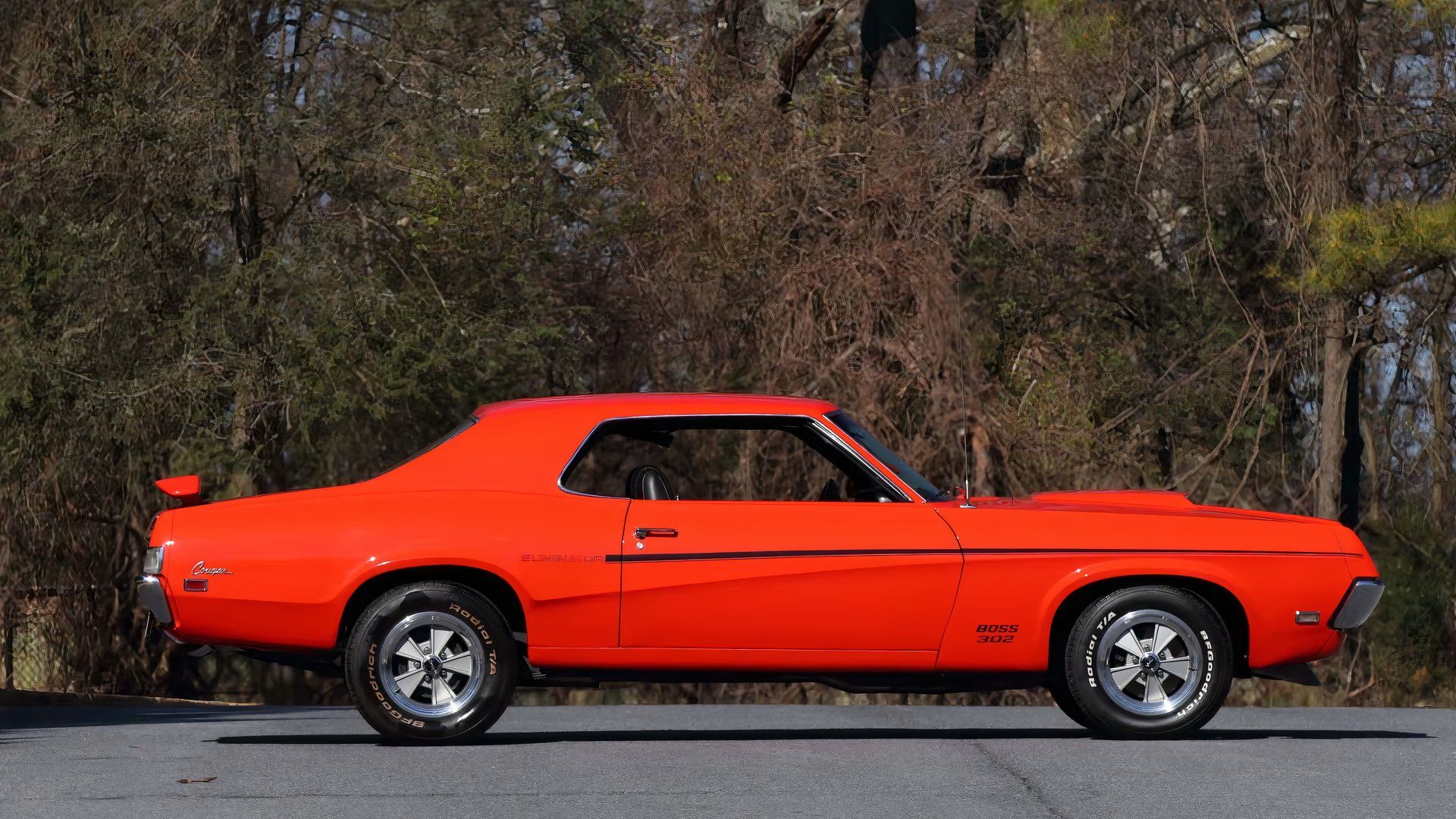
The Boss 302 engine was designed for the Trans-Am racing series, and it gave the Cougar the power and performance needed to compete with the best of its rivals, including the Ford Mustang and Chevrolet Camaro.
While prices for classic cars can fluctuate depending on demand, condition, and originality, the 1969 Cougar Boss 302 is generally considered to be a solid investment.
According to Hagerty, the value of these cars has been steadily rising over the past few years. Well-preserved models in excellent condition can command a high price, especially at auction.
auction results back this up, showing that prices for the Cougar Boss 302 can range widely depending on the specifics of the car, with some going for over $100,000 in pristine condition.
If you’re a collector or simply a fan of classic muscle cars, the 1969 Cougar Boss 302 is a car worth considering. Its combination of rarity, performance, and iconic design makes it a standout in the of American muscle cars.
However, with values on the rise, it’s important to act soon if you’re thinking about adding one to your collection. As more people recognize the significance of this car, prices are likely to continue climbing, putting the Cougar Boss 302 out of reach for many buyers in the future.
In short, the 1969 Mercury Cougar Boss 302 is not only a valuable classic car but also a smart investment. Its performance pedigree, rarity, and rising market value make it a car worth keeping an eye on.
If you’ve ever dreamed of owning one, now might be the perfect time to make that dream a reality before prices soar any higher.
The 1969 Mercury Cougar Eliminator Boss 302 A Rare Muscle Car Worth $70,000
The first-generation Mercury Cougar made its debut in 1967 and continued until 1970. Built on a lengthened version of the original Mustang chassis, the Cougar was designed to offer more luxury and style, given its status as a premium Mercury model.
All Cougar models came with V8 engines as standard, which set it apart from other muscle cars of its time. Its sleek design and package helped it gain popularity in the early years.
However, things got even more exciting in 1969 when the Cougar received a design update, adopting a muscular “Coke bottle” shape that gave it an edgier look.
The best was yet to come for the Cougar in the form of the Eliminator package, which was offered from 1969 to 1970. The Eliminator package included several performance and aesthetic upgrades, making the Cougar a standout in the muscle car world.
It featured a black grille, racing stripes, a rear spoiler, and interior enhancements that added to its sporty appeal.
Along with these changes, the package included a heavy-duty suspension system as part of the Handling/Tire package, giving the Cougar better handling and performance.
For true muscle car fans, the highlight of the Eliminator package was the option to equip the car with the legendary Boss 302 engine, which was borrowed from the Ford Mustang.
This race-bred engine transformed the Cougar from a stylish, luxurious cruiser into a high-performance machine. The Boss 302 engine was only available in the Eliminator model, making it a rare and sought-after option for collectors.
1969 Mercury Cougar Eliminator Values
According to data from Hagerty, a well-respected source for classic car valuations, the 1969 Mercury Cougar Eliminator with the Boss 302 engine has an average value of around $70,400.
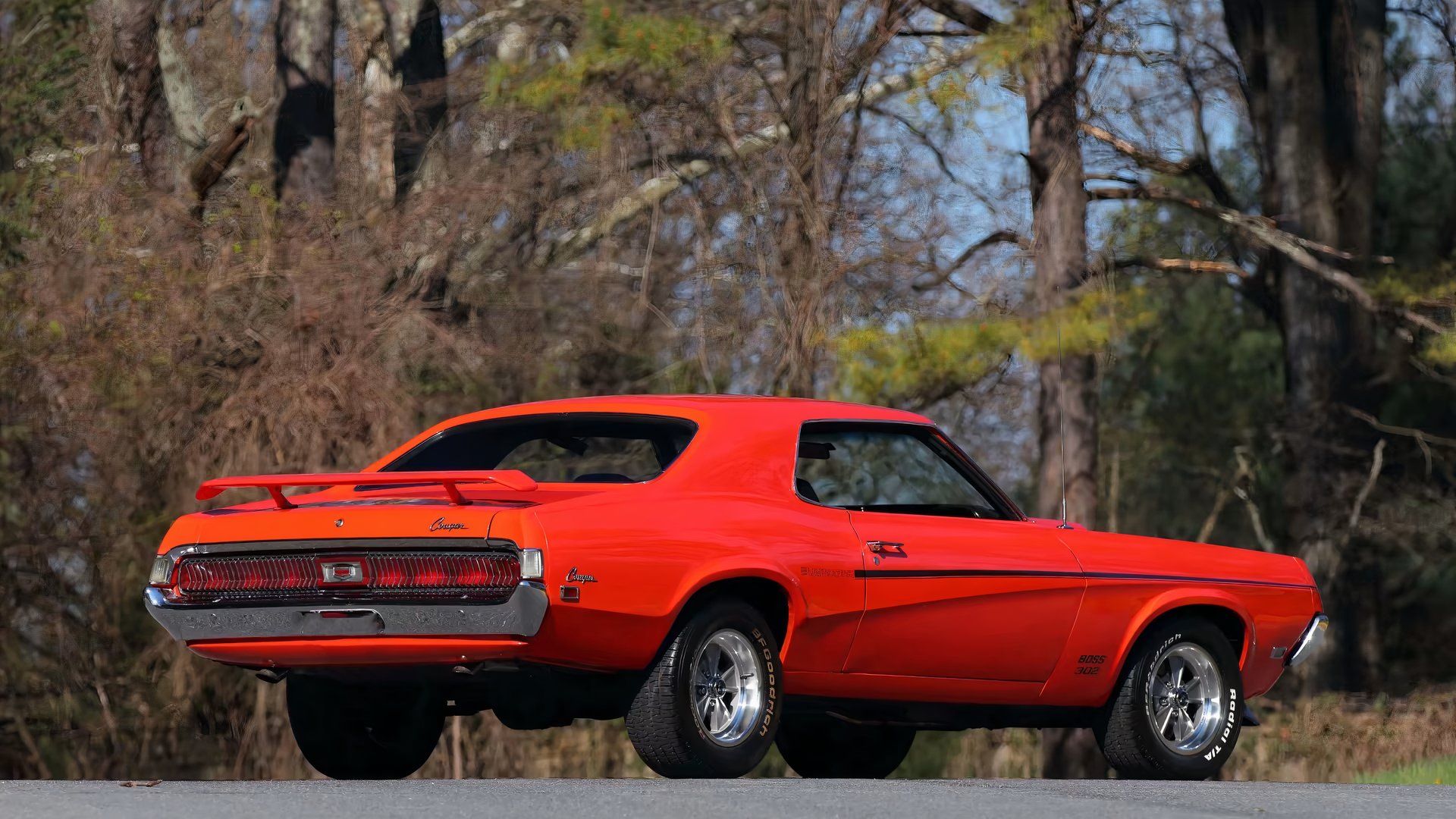
This puts it in the same league as other high-performance Cougar models, such as the Cobra Jet variants, which are valued at $70,800 for the regular Cobra Jet and $80,400 for the Super Cobra Jet.
On the other hand, more common Eliminator models with the base 351 engine are valued much lower, at around $22,200, reflecting their more widespread availability and less aggressive performance.
Interestingly, the Cougar Boss 302’s value is quite close to its Ford Mustang counterpart. The 1969 Ford Mustang Boss 302 is valued at an average of $68,900, making the Cougar a similarly valuable option in the of muscle cars.
Over at, the auction values for 1969 Cougar Eliminators (across all engine types) show an average selling price of $63,756. Auction prices for these cars can vary widely, with one Cougar Boss 302 selling for $37,000 last year, while another went for a staggering $99,000 in 2022.
The Rarity and Production Numbers of the Cougar Boss 302
The 1969 Mercury Cougar was a fairly popular car, with over 100,000 units produced that year. However, only 2,250 of those were Eliminator models, making them relatively rare. What makes the Cougar Boss 302 even more special is that just 169 of those Eliminators were fitted with the Boss 302 engine.
This makes the Cougar Boss 302 an extremely rare muscle car, which only adds to its appeal for collectors. Despite its rarity, the Cougar Boss 302 remains reasonably priced compared to other high-performance muscle cars of the same era.
The 1969 Mercury Cougar Eliminator Boss 302 is not just a rare and valuable classic car but also a significant piece of American muscle car history. Its blend of luxury, performance, and rarity makes it a standout model in the muscle car world.
With an average value of $70,400, it’s a car worth considering for collectors and enthusiasts alike.
Given its limited production numbers and rising market value, now might be the perfect time to invest in this rare muscle car before its price climbs even higher.
The 1969 Mercury Cougar Eliminator is a classic muscle car known for its performance and style. This car was based on the same platform as the Ford Mustang but offered a more luxurious and comfortable experience.
One of the standout features of the Eliminator was its powerful engine options, which included several V8 choices designed to appeal to performance enthusiasts.
Engine Options for the 1969 Cougar Eliminator
For 1969, the Cougar Eliminator came with several engine options, allowing buyers to choose the powertrain that best suited their needs. The available engines were:
The Cougar Windsor Boss 302 is a classic muscle car that embodies the golden era of American automotive performance.
This model, often overshadowed by the more famous Mustang Boss 302, shares much of the same DNA but offers a unique and compelling package. Under the hood lies a 4.9-liter naturally aspirated (NA) V8 engine, commonly referred to as the Windsor Boss 302, which delivers an official power output of 290 horsepower and 290 lb-ft of torque.
However, enthusiasts and experts often argue that these numbers were conservative estimates, with the actual power being higher, likely to appeal to insurance regulations of the time.
Engine and Performance
The heart of the Cougar Windsor Boss 302 is its 4.9-liter V8 engine. Known for its robust performance and durability, this engine was designed with high-revving capabilities, making it perfect for the racing world.
The naturally aspirated V8 has eight cylinders arranged in a V formation, a design that was key to delivering a smooth power curve and responsive performance. With an official horsepower rating of 290 hp, this engine allowed the Cougar to compete with some of the most iconic muscle cars of its era.
Despite the official figure, many believe that the actual output exceeded 300 horsepower, making the Windsor Boss 302 engine a true beast on the road.
The torque output of 290 lb-ft complements the engine’s high-revving nature, providing excellent low-end grunt that is essential for the swift acceleration muscle cars are known for.
The Cougar’s V8, paired with its drivetrain, delivers a thrilling driving experience, especially when pushed hard on the open road.
Whether you’re cruising down the highway or taking sharp turns, the Cougar Windsor Boss 302 delivers in both power and handling.
Drivetrain and Driving Dynamics
The Cougar Windsor Boss 302 follows the traditional front-engine, rear-wheel-drive (RWD) layout, which is a hallmark of American muscle cars. This setup places the engine at the front of the vehicle, driving the rear wheels.
The result is a balanced weight distribution that enhances traction and handling. The RWD system, combined with the powerful V8 engine, creates an engaging and responsive driving experience that appeals to car enthusiasts who enjoy a more connected and raw driving sensation.
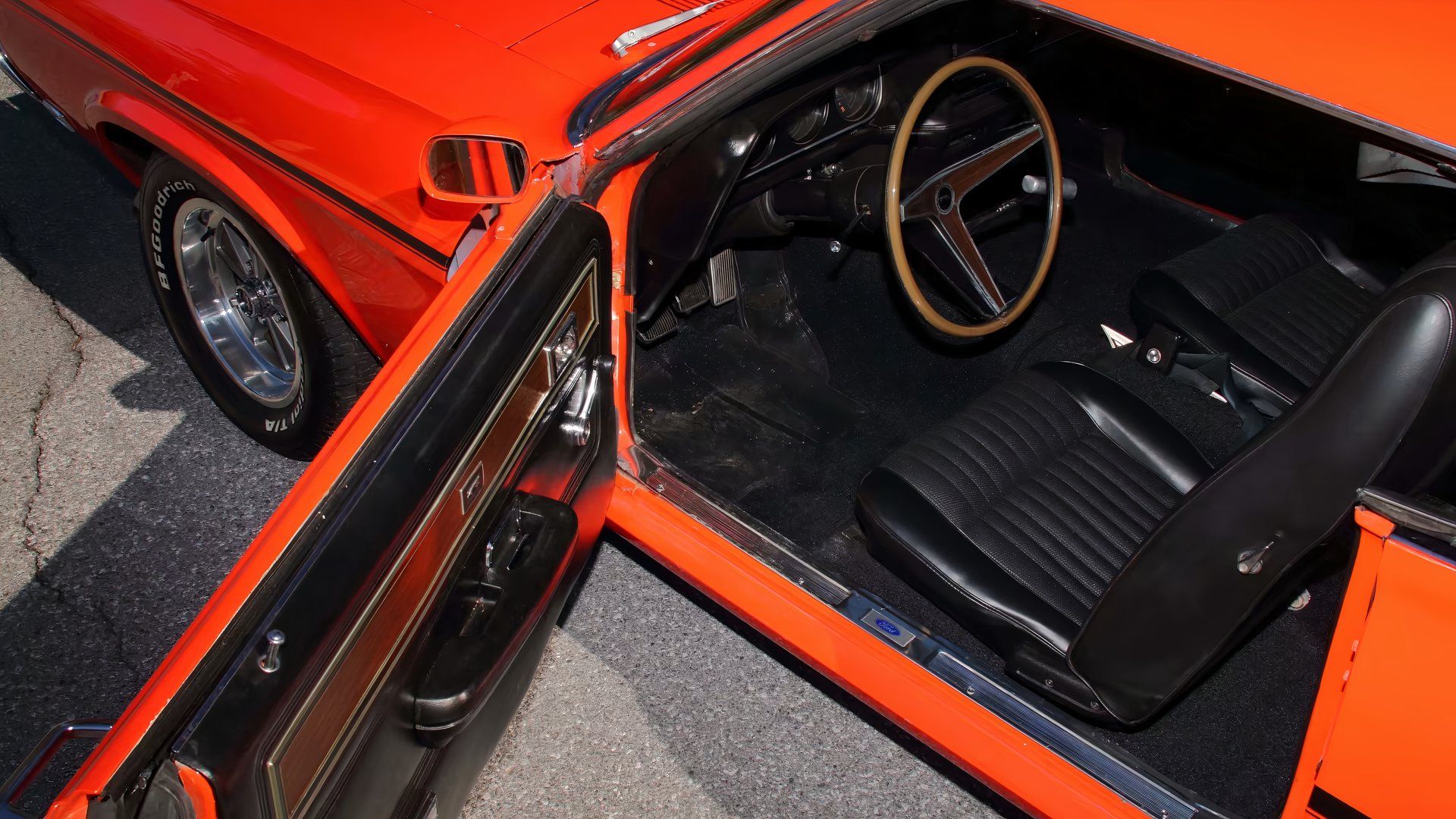
The combination of a high-performance V8 engine and RWD ensures that the Cougar Windsor Boss 302 is capable of thrilling acceleration, especially in straight-line performance.
However, thanks to its well-tuned suspension and chassis, it also offers good handling characteristics for a muscle car of its size, making it more than just a straight-line performer.
The Cougar Windsor Boss 302 is a standout in the of classic American muscle cars. Its 4.9-liter V8 engine, underrated at 290 horsepower, combined with a front-engine, rear-wheel-drive setup, creates a driving experience that remains highly respected to this day.
It may not be as famous as its Mustang cousin, but the Cougar Windsor Boss 302 offers a unique blend of style, power, and performance that has earned it a rightful place in muscle car history.
For enthusiasts who appreciate classic engineering and raw V8 performance, this car is a gem from a bygone era.
The Boss 302 was the highlight of the engine lineup. While it officially produced 290 hp, many enthusiasts believed it was capable of producing closer to 350 hp.
This powerful engine allowed the Cougar to reach 60 mph in just 7.3 seconds, a respectable time for a car weighing around 3,300 pounds. However, the Boss 302 engine was only available in the Eliminator model, making it quite rare.
The FE Cobra Jet is one of the most iconic engines in American muscle car history, revered for its power and performance during the golden era of high-horsepower vehicles.
Known for being fitted in Ford’s high-performance models, particularly the Mustang and the Torino, the 7.0-liter FE Cobra Jet V8 engine was a formidable force on the road and the drag strip.
With a naturally aspirated (NA) V8 configuration, this engine packed a serious punch, delivering 335 horsepower and a massive 440 lb-ft of torque, making it one of the most powerful production engines of its time.
Engine and Performance
At the heart of the FE Cobra Jet is its 7.0-liter V8 engine, a massive powerplant that defines the car’s character. This large-displacement engine was built for serious performance, offering excellent power across a broad range of RPMs.
With 335 horsepower under the hood, the FE Cobra Jet could push its host vehicle to impressive speeds, while the 440 lb-ft of torque provided immense low-end pull, making it a drag racer’s dream.
The engine was naturally aspirated, meaning it relied solely on air intake without any turbochargers or superchargers to boost performance. This made it both powerful and reliable, with a rawness that modern engines often lack.
Despite its official power rating, much like other engines of the time, the 335 hp figure was considered conservative. Many enthusiasts and experts believe the actual output of the FE Cobra Jet was closer to 400 horsepower, making it even more of a beast than Ford had initially claimed.
This kind of underreporting was common in the muscle car era, largely due to insurance and emissions regulations that automakers were trying to navigate.
Drivetrain and Driving Dynamics
The FE Cobra Jet followed the classic front-engine, rear-wheel-drive (RWD) layout, a standard for muscle cars that prioritized power and performance. The front-engine design, where the massive V8 sat up front, delivered power directly to the rear wheels.
This setup, combined with the torque-heavy nature of the engine, created thrilling acceleration, especially in straight-line performance, which was ideal for drag racing.
The RWD system allowed the FE Cobra Jet-powered cars to handle all that torque effectively. With proper traction, these cars could launch off the line with incredible force.
However, it wasn’t just about going fast in a straight line. The Cobra Jet models were also equipped with reinforced suspensions and brakes to handle the power and weight of the engine, allowing for surprisingly good cornering and control for a vehicle of its size and era.
The FE Cobra Jet is a legendary engine that left a lasting mark on the muscle car world. Its 7.0-liter displacement, 335 horsepower, and 440 lb-ft of torque made it a dominant force in the late 1960s and early 1970s, helping to solidify Ford’s reputation as a leader in performance cars.
Its front-engine, rear-wheel-drive layout and raw, naturally aspirated power provided an exhilarating driving experience that remains iconic among muscle car enthusiasts.
Whether on the drag strip or cruising the streets, cars powered by the FE Cobra Jet delivered unforgettable performance, making them highly sought after even today.
For those who appreciate the raw power and simplicity of classic muscle car engines, the FE Cobra Jet stands as a symbol of an era where bigger was always better, and performance was king.
The Cobra Jet was another option for performance seekers, offering more power and torque than the Boss 302.
This engine provided excellent acceleration and was a popular choice among muscle car enthusiasts.
Similar to the Cobra Jet, the Super Cobra Jet delivered impressive performance. It was designed for those who wanted even more power, making it an exciting option for serious racers.
The FE 390 is a classic V8 engine from Ford’s FE series, renowned for its strength and versatility during the 1960s and early 1970s.
With a displacement of 6.4 liters, the FE 390 was a naturally aspirated (NA) powerhouse, delivering 320 horsepower and a hefty 427 lb-ft of torque. This engine was popular in a variety of Ford models, including the Mustang, Galaxie, and even some trucks, making it one of the most well-rounded engines in Ford’s lineup.
The combination of power and torque made the FE 390 a favorite among muscle car enthusiasts and those looking for dependable performance.
Engine and Performance
The heart of the FE 390 is its 6.4-liter V8 engine, designed to provide robust power across the RPM range. The naturally aspirated engine configuration allowed for a more straightforward, mechanical approach to generating horsepower.
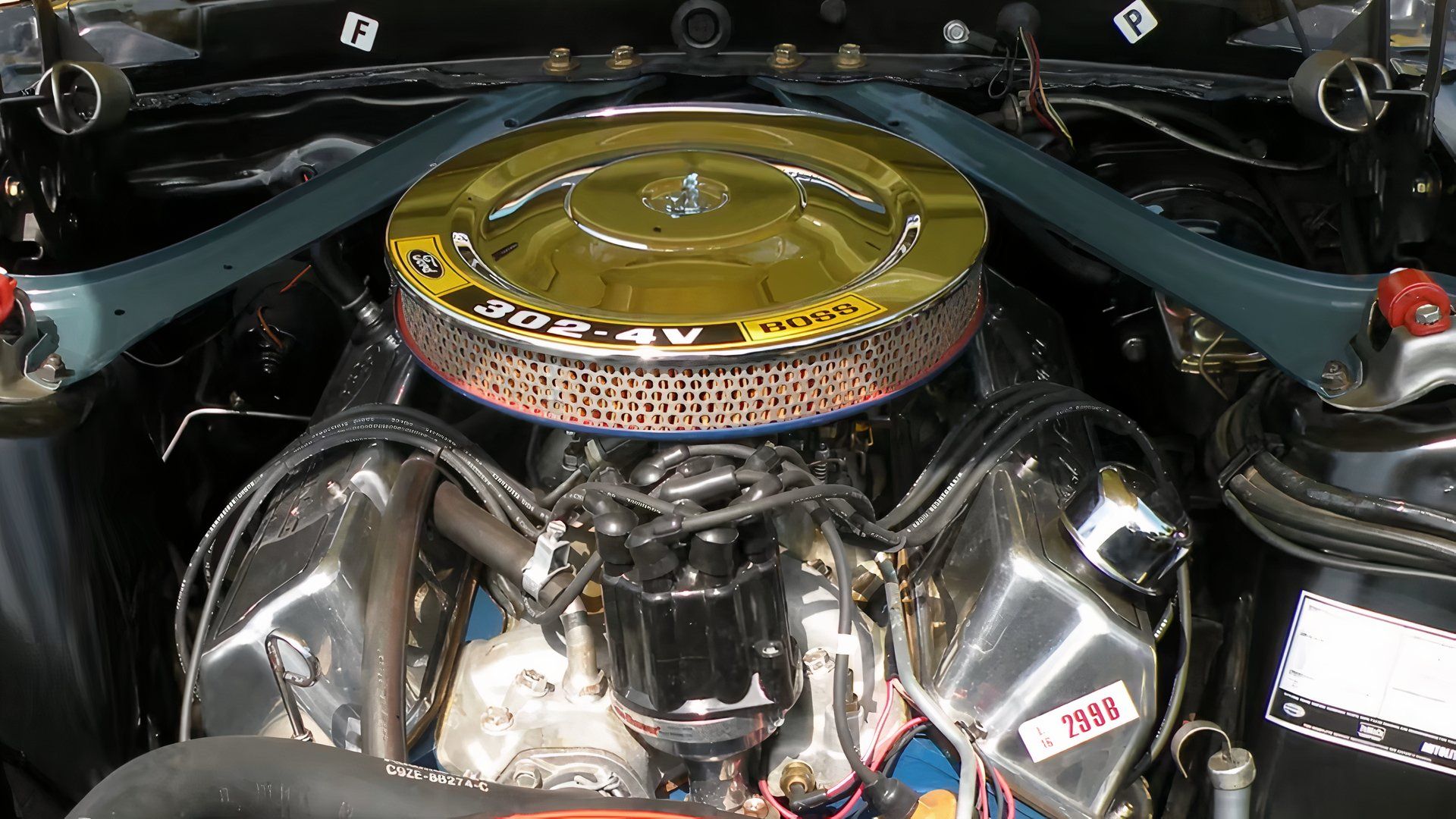
With 320 horsepower on tap, the FE 390 was more than capable of propelling Ford’s performance cars of the era to thrilling speeds.
This power output gave the FE 390 a strong presence in the muscle car market, competing with some of the biggest names in American performance vehicles.
However, the true strength of the FE 390 lies in its torque. With 427 lb-ft of torque, this engine provided incredible low-end power, making it ideal for quick acceleration and strong pulling capability.
Whether you were looking for speed off the line or simply cruising with authority, the FE 390 delivered a punch that was hard to ignore.
This high torque output made it especially popular for drag racing and other performance-focused activities, where immediate power delivery is key.
Drivetrain and Driving Dynamics
Like many muscle cars of the time, the FE 390 was part of a front-engine, rear-wheel-drive (RWD) layout. This classic drivetrain configuration is essential for balancing the car’s weight and delivering power to the rear wheels.
The front-engine placement ensured that the heavy V8 was positioned over the front axle, while the rear wheels received all the torque, creating a driving experience that felt balanced yet powerful.
This RWD setup allowed for excellent traction, especially during acceleration, making the FE 390-equipped cars not only fast but also stable at high speeds.
The combination of the powerful V8 and RWD setup gave drivers an exhilarating experience, especially when launching from a stop or turns with a bit of throttle.
The balance of the drivetrain also helped with handling, ensuring that the FE 390-powered vehicles weren’t just about straight-line speed but could hold their own in more dynamic driving situations.
Popularity and Versatility
The FE 390 was versatile, powering everything from high-performance cars to Ford’s larger sedans and trucks. This versatility made it a reliable choice for those seeking a powerful engine that could handle daily driving as well as more spirited performance needs.
Whether found in a Mustang, Galaxie, or F-100, the FE 390 delivered consistent and dependable power, making it a trusted engine for a wide variety of vehicles.
Its reliability, combined with its powerful performance, solidified the FE 390’s reputation as one of Ford’s best V8 engines.
It was a favorite for both muscle car enthusiasts looking for speed and torque, as well as drivers who needed an engine capable of pulling heavy loads in larger vehicles.
The FE 390 is an iconic engine from Ford’s lineup that offered a perfect mix of power, torque, and versatility. With 320 horsepower and 427 lb-ft of torque, it delivered impressive performance, especially in low-end acceleration.
The front-engine, rear-wheel-drive layout ensured that this power was delivered smoothly and effectively, providing a dynamic and engaging driving experience. The FE 390’s wide use across Ford’s models made it a trusted and reliable engine that left a lasting mark on the muscle car era.
Today, it remains a symbol of the power and engineering prowess that defined the golden age of American V8 engines.
The 390 engine provided a solid balance of power and comfort, appealing to buyers who wanted a sporty feel without sacrificing luxury.
The Ford Windsor 351
The Windsor 351 is one of Ford’s most notable V8 engines, widely used in the late 1960s and 1970s as a reliable powerhouse for both performance cars and trucks. Known for its blend of power and durability, the 5.8-liter naturally aspirated (NA) V8 engine was an integral part of Ford’s muscle car era.
With a solid 290 horsepower and 385 lb-ft of torque, the Windsor 351 delivered a strong combination of speed, power, and flexibility, making it a favorite among car enthusiasts and racers alike.
Engine and Performance
At the heart of the Windsor 351 is its 5.8-liter V8 engine, which offered impressive performance for its time. The engine’s naturally aspirated design meant it relied on traditional air intake without forced induction, creating a raw, mechanical feel that is characteristic of classic muscle cars.
The 290 horsepower provided by this engine was more than enough to propel the cars of its era to thrilling speeds, while the 385 lb-ft of torque ensured that there was plenty of pulling power, particularly at lower RPMs.
This made the Windsor 351 not just a great engine for high-speed performance, but also for acceleration and everyday driving.
The torque-heavy nature of the Windsor 351 gave it excellent low-end grunt, allowing cars equipped with this engine to get off the line quickly and with authority.

Whether accelerating from a stop or overtaking on the highway, the Windsor 351 always had power on tap, making it a versatile engine for different driving conditions.
Drivetrain and Driving Dynamics
The Windsor 351 features the classic front-engine, rear-wheel-drive (RWD) setup that was standard for muscle cars of its era.
This layout places the engine at the front of the vehicle, driving the rear wheels, which is ideal for delivering the power and torque of a V8 engine.
With the weight of the engine over the front wheels and power being delivered to the rear, cars with this configuration have good balance and provide a dynamic driving experience.
The RWD system complements the Windsor 351’s powerful V8, allowing it to handle the torque effectively while maintaining traction during acceleration.
While these cars were primarily built for straight-line speed, the well-balanced drivetrain also allowed for better handling compared to some of the larger, heavier muscle cars of the time.
Versatility and Popularity
One of the reasons the Windsor 351 became so popular was its versatility. While it was often found in performance cars like the Mustang, it was also used in various other models, including trucks and even larger sedans.
Its robust design made it a reliable engine that could take the punishment of hard driving while still delivering excellent performance.
This made the Windsor 351 a favorite among racers, as well as those who wanted a dependable, powerful engine for everyday use.
The Windsor 351 is a standout V8 engine that left a lasting impact on Ford’s performance legacy. With 290 horsepower and 385 lb-ft of torque, it offered a strong balance of power and reliability.
Its front-engine, rear-wheel-drive layout, combined with its naturally aspirated design, provided a thrilling yet manageable driving experience that appealed to both enthusiasts and casual drivers.
Whether in a high-performance muscle car or a durable truck, the Windsor 351 proved to be a versatile engine that could handle just about anything thrown at it.
Today, it remains a symbol of the muscle car era and a reminder of Ford’s engineering prowess during a time when performance was king.
The standard Windsor 351 engine was the entry-level option for the Eliminator. Although it shared a similar horsepower figure with the Boss 302, it did not have the same racing pedigree and performance capabilities.
Transmission Choices
In addition to the various engine options, the 1969 Cougar Eliminator offered different transmission choices. The standard transmission was a 3-speed manual, but buyers could opt for a more performance-oriented 4-speed manual.
There was also a 3-speed automatic transmission available, which suited the car’s luxurious character and catered to a wider audience. In fact, according to Hagerty, around 89% of all Cougars were sold with automatic transmissions.
The 1969 Mercury Cougar Eliminator was more than just a stylish muscle car; it was a performance machine with a range of powerful engine options. From the rare Boss 302 to the robust Cobra Jet engines, buyers had plenty of choices to fit their performance needs.
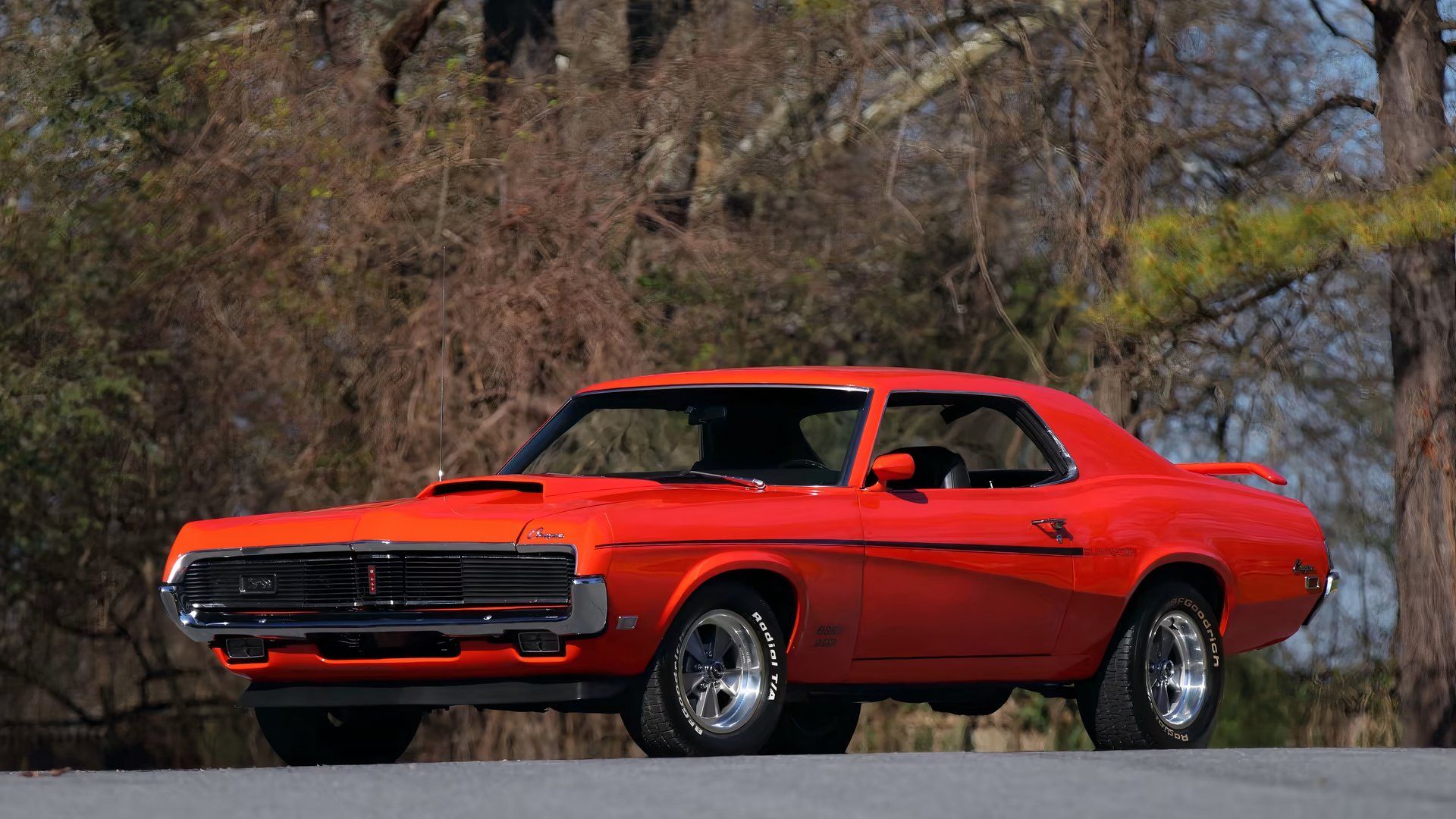
Despite being a luxury personal car, the Eliminator did not shy away from delivering exhilarating performance. Its unique combination of style and power has made it a sought-after classic in today’s collector car market, and its legacy continues to be celebrated by car enthusiasts around the world.
Whether you’re a fan of the Boss 302 or prefer the comfort of an automatic transmission, the Cougar Eliminator remains an iconic symbol of American muscle car culture.
The Ford Boss 302 Engine The Underrated Powerhouse
The Ford Boss 302 engine has earned a special place in automotive history, known for its performance and engineering excellence.
Designed for racing in the SCCA Trans Am series, the Boss 302 engine was created to compete with formidable rivals like the Chevrolet Camaro Z/28. Despite its racing pedigree, this engine is often overshadowed by its bigger counterparts, making it an underrated gem in the of classic American muscle.
Design and Development
The Boss 302 was specifically engineered to meet the demands of racing. It was built with features that enhanced its performance and durability.
Although it has a capacity of just 302 cubic inches, it utilized the cylinder head design from the larger Cleveland 351 engine.
This innovative design allowed for larger ports and valves, which significantly improved airflow and engine performance.
In terms of construction, the Boss 302 was built with durability in mind. It featured forged pistons and a forged crankshaft, ensuring that it could handle the stresses of high-performance driving.
The engine also included a 4-bolt main bottom end, which provided additional strength. Upgraded connecting rods and thicker cylinder walls further enhanced its longevity, making the Boss 302 a reliable choice for both racing and everyday driving.
Legacy in Production Cars
The Boss 302 engine became famous not only in the racing world but also in the production Ford Mustang during the 1969 and 1970 model years.
However, it was also offered in the Mercury Cougar Eliminator, although only in a limited number of units—just 169 were produced with this powerful engine. This rarity adds to the allure and desirability of the Cougar Eliminator Boss 302 today.
While the Cougar is a larger and more comfortable vehicle compared to the Mustang, it still delivered an exhilarating driving experience.
The combination of the Boss 302 engine and a four-speed manual transmission made the Cougar a muscle car that could be enjoyed every day, combining performance with comfort and style.
The Value of the Boss 302
One way to appreciate the importance of the Boss 302 engine is to compare the values of the cars it powered. The 1969 Mustang Boss 302 commands an average value of around $68,900, which is significantly higher than the $25,000 average for a 1969 GT coupe equipped with a 351 engine.
This stark difference in value highlights the strong demand for vehicles powered by the Boss 302, showcasing its legendary status among collectors and enthusiasts.
The Boss 302’s legacy continued beyond its original production years. In 2012, Ford introduced a new version of the Boss 302 for the Mustang, which utilized a modified 5.0-liter Coyote engine.
This modern iteration paid homage to the original Boss 302, proving that its impact on the automotive industry is still felt today.
The Ford Boss 302 engine is a remarkable example of performance engineering, originally designed for racing but later making its way into some of Ford’s most iconic production vehicles.

Although it may not have the same notoriety as larger engines like the Boss 429 or the 428 Cobra Jet, the Boss 302 stands out as a powerful and capable engine that has earned its place in automotive history.
Whether in a Mustang or a Cougar Eliminator, the Boss 302 delivers an exhilarating driving experience that has enthusiasts for decades. Its combination of performance, reliability, and unique engineering makes it a true powerhouse and a to Ford’s racing heritage.
As a result, the Boss 302 continues to be celebrated and sought after by collectors and fans of classic American muscle cars.
